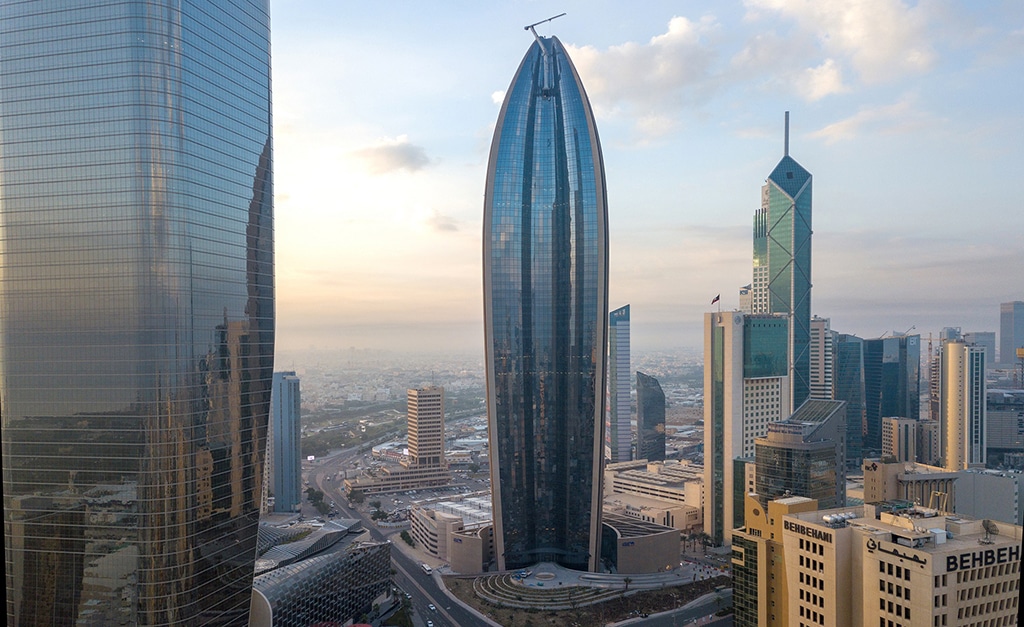KUWAIT: Driven by rising energy costs, US inflation rose above forecasts in August, likely complicating the Federal Reserve’s battle to keep prices under control. Consumer prices rose by 3.7 percent on a yearly basis, up from 3.2 percent in July and beating consensus forecasts of 3.6 percent. On a monthly basis, prices increased 0.6 percent following a 0.2 percent gain the month prior.
More than half the monthly increase in price pressures were driven by a recent jump in petrol prices after Saudi Arabia and Russia renewed efforts to push oil prices higher. Brent crude was last seen trading at a 10-month high of $92.50. Underlying price pressures were also marginally stronger than expected, but continued to decline year on year, providing the Fed cover to leave interest rates unchanged next Wednesday.
The core figure gained a more modest 0.3 percent m/m, slightly above the 0.2 percent rate for July. However on an annual basis, it fell from 4.7 percent to 4.3 percent. After hiking rates 11 times since March 2022 in an effort to bring inflation back towards its 2 percent target, the Federal Reserve is widely expected to keep interest rates steady at its next meeting on September 19-20. Moving forward however, investors are split as to whether the central bank will make another interest rate rise later in the year.
PPI accelerates on gasoline
Prices paid to US producers increased in August, boosted by rising energy and transportation costs. The producer price index rose 0.7 percent last month, marking the largest gain since June 2022. Wholesale goods prices jumped 2.0 percent last month, with a 20 percent surge in gasoline prices accounting for 60 percent of the increase. Excluding volatile components, the core figure nudged up 0.1 percent. US retail sales picked up in August, boosted by higher gas prices while spending on other items grew modestly.
Retail sales rose 0.6 percent m/m, slightly faster than July’s revised 0.5 percent gain, marking the fifth straight month of growth. The acceleration was largely driven by spending at gas stations, which advanced 5.2 percent last month. Higher oil prices due to OPEC+ production cuts, strong demand and disruption in Libya have all contributed to higher prices at gas stations. Excluding sales at gasoline stations, retail spending advanced a more modest 0.2 percent in August from July. The data illustrates resilient shoppers despite 11 interest rates hikes by the Federal Reserve.
Britain’s economy contracted in July, weighed down by strikes in hospitals and schools as well as unusually rainy weather which hurt output. Gross domestic product shrank 0.5 percent in July from June, worse than the 0.2 percent contraction expected. The figure followed a better than expected 0.2 percent growth in the second quarter of the year, and heightened fears of a recession in the second half of the year.
The drop inQ3 output goes beyond sectors affected by strikes and rain.All three major sectors (manufacturing, services and construction) contracted for the first time since the summer of 2022. Investors’ expectations regarding future interest rate rises have edged lower in recent days, but traders still expect the BoE to raise rates at their next meeting to 5.5 percent. Moving forward, investors are split on whether or not that will be the central bank’s final rate increase.
ECB hikes rates
The European Central Bank announced its 10th consecutive hike in its main interest rate, as the fight against inflation took priority over a weakening economy. Rate hikes have now taken the central bank’s main deposit facility from -0.5 percent in June 2022 to a record 4 percent. The main reason for the hike seems to be upward revisions in macroeconomic projections. For the euro area, inflation is seen averaging 5.6 percent this year from a prior forecast of 5.4 percent, and 3.2 percent next year from a previous forecast of 3 percent.
The ECB’s statement shook markets as it indicated further hikes may be off the table for now. “Based on its current assessment, the Governing Council considers that the key ECB interest rates have reached levels that, maintained for a sufficiently long duration, will make a substantial contribution to the timely return of inflation to the target,” it said.” The governing council’s future decisions will ensure that the key ECB interest rates will be set at sufficiently restrictive levels for as long as necessary.”
In a sign that decade-high interest rates have yet to soften demand in the labor market, Australia’s employment surged in August. The data from the Australian Bureau of Statistics showed net employment rose 64,900 in August from July, while markets had forecast an increase of around 23,000. The jobless rate held steady at 3.7 percent while the participation rate surged to 67 percent, the highest since records began in 2013.
The labor market has proven its resiliency with 410,700 net jobs added in the 12 months to August, despite interest rates climbing 400 basis points to an 11-year high of 4.1 percent. Markets maintained their bets that the Reserve Bank of Australia would keep rates steady next month, with an about 40 percent chance of one final hike early next year.
Optimistic data out of China
China’s industrial output grew 4.5 percent in August from a year earlier, accelerating from the 3.7 percent pace seen in July. Meanwhile retail sales, a gauge of consumption, grew at a faster 4.6 percent pace in August compared to a 2.5 percent increase in July. The figures followed better than expected bank lending data, narrowing in the declines of exports and imports, as well as easing deflationary pressure. The latest bulk of data indicates that the recent support measures may be starting to stabilize a choppy economic recovery. However, the economy remains pressured by an ailing property sector and high youth unemployment.
Kuwait
Kuwaiti dinar USD/KWD closed last week at 0.30840.











